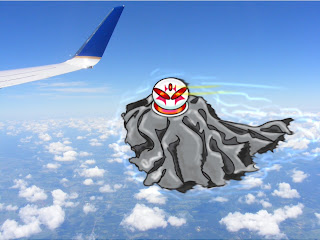Tribble-Industries
Sunday, November 2, 2025
Tribble-Industries: A fun slap together movie from Tribble-Industrie...
Tribble-Industries:
A fun slap together movie from Tribble-Industrie...: A fun slap together movie from Tribble-Industries. B-rated...maybe not. Enjoy the music choices. Done with a combination of drawn ani...
Wednesday, January 9, 2019
To anyone who has seen this channel over the years. Sorry for being so inconsiderate.
I usually use Deviant Art, but I will post some interesting concepts here for you guys to look at and consider.
Some Dress Designs I was working on over the years.
Some Dress Designs I was working on over the years.
A brush Art Tribute to CnC Red Alert 1.
Brush Art Concepts
Wednesday, December 14, 2011
Finishing up the class....section 1.
This is a post of materials done over art reviews and make up materials.
Knowles is the typification of concept and abstraction, where as Langdon homes in on particulars and details to get his point across.
Blendings done with Adobe Illustrator.
Art Reviews:
Impressionists: Brooks Museum till November 2011
This event was showing some of the greatest works of the Impressionist Era and Neo-Impressionist Era. Showing the effect and development of their art styles over time. The one thing that should be apparent is the fact that French Art (which has influenced the Western World...via its Academies.) has a struggle within it. Conformity and Nonconformity wage a war in Western World over all academic fields. It is many times a pedagogue over the certain strengths and superiority of one's art style over the other factions art style, instead of a dialogue. This is the case, concerning the Impressionists; who rejected the Classical conformity of the Academy for a creative and natural (romantic) approach to Art. Monet and Renoir are two of the major impressionists, who leaves their mark. To the viewers in the Salon of Paris, it was an atrocious heresy against "art" which by classical standards must be highly detailed, and highly stroked and the details and paint must be flat like Classical, Baroque, or Renaissance paintings. However, the Impressionists painting style is somewhat choppy, fractured, messy, and illogical to those who are used to close up inspections and high detailing. But, when one steps away from the painting...between 6 to 12ft. A particular affect comes into sudden realization. Impressionist artwork is almost photographic, it is like having a camera lense out of focus at a distant object. And the neo-Impressionists are also aware of this capacity. The only downside, is to this day most galleries...(the show at Brooks included) do no justice to the artworks and their apparent capacity to be affected by LOS (Line of Sight) and optical illusions. Impressionist artwork must be be set up along a cooridor in a collection of artwork, meaning viewers will on entering a gallery or leaving it or passing though be brought within the viewing perspective of the artwork to achieve maximum photographic illusion effect. Even today, the effects of
Pisgah Forest and Nonconnah Pottery: Brooks Museum 2011 till November
The works of Walter B. Stephen, are notably the most intriguing artworks ever done, for a "non-trained" artist -potter. He works with some of the most intriguing sets of materials to create some of the most amazing pottery. The crystalline glazes and beautiful and almost mimic a trapped basin of water. Glazes are not uni formal in placement or theme. Varying shapes and sizes of works are done, and some of the glazes are very beautiful blends of crystal blurring on glass, and some whether intentionally or by accident have shattered. The "Wedgewood" Baroque/Neo-Classical relief pottery, in where layers of slip are deliberately and delicately painted layer after layer on top of one another, a creative echo to older artworks from the ancient era. Other vases, with a very beautiful green variations, look to almost be grass or kelp tamed and forced into a container. Much of the pottery reflects positively on an artist who worked with what he loved and made money doing it. It shows the possibilities of what one can do.
Armed and Dangerous: Brooks Museum November 2011 till Jan 2012.
A rather curious form of artwork if it can be called that. This current display at the Brooks, is a small traveling exhibition on weaponry from around the world. It has a variety of weaponry up to the 1800's and as far back as the beginning of time. But, what strikes you about these weapons is the amount of time, energy, and creativity to create something that could end a life, and does nothing else except maybe hang over someones mantel during peacetime. It shocks the viewer with the variety of materials metal, wood, gold, gems, and stone used for weaponry. The daggers from the Philippines and Indonesia are stunning works of craftsmanship. With Islamic and native artwork crafted into the blade, and sometimes the natural materials and raw nature in some weaponry. Clubs from Polynesia and Americas have a bizarre and intrinsically beautiful blend of forms and techniques in their shaping from hard wood. The amount of gilding on a suit of Germanic armor from the late Renaissance to Baroque Period is also interesting and sometimes captivating, but one wonders how it affected the sight of an enemy. Japanese weaponry are the epitome of a drive for perfection and elegance, nothing is wasted in the design and development of the blades of the katana and yari weapons. It is kind of sobering, how dis-elegant a weapon of today looks with its industrial conformity, also how the costs of past manufacturing sometimes would by default regulate some weapons to pasture as status symbols or extremely cost prohibitive only to the wealthy. From what was said many weapons were the trapping of animal power and nature to destructive ends, I only see man's own creative destructive ends.
Bohemian Glass: Permanent Display at Brooks Museum
Tucked in between late 1700 Wedgeworth era artworks and furniture and the Modern Art exhibits in the Brooks, lies one of the little secret wonders of the Museum, small hallway exhibit of Bohemian Glass. Centered around Prague in the Czech Republic. between the 1800's and 1900's. The manufacture of Bohemian glass was done to satisfy certain demands for high caliber, and unique glass ware for also use for lighting covers, and for tableware, and etc. The glass was in competition with Tiffany glass ware (stain glass) style, how the majority of the artistic corps was wiped out with the First World War, and many of the techniques seem to be forgotten. The glassware reflects a beautiful array of colors, composite glass, air bubbles, and even mother of pearl opacity. My favorite works are a pair of Bohemian glass vases... one is a deep blue, with electroplated silver reliefs ontop of the glass, which still has me wondering how its was done.
These glassware, are of a bygone area, and are so mystifying as to how, and what were used to make them.
Memoiries: Richard Knowles and Steve Langdon at UofM Art Museum Fall Semester 2011
Currently on display at the University of Memphis Art Museum, is a showing of two local Tennessee artists. Richard Knowles and Steve Langdon. Both have very unique and intriguing artstyles. Knowles seems to work with materials related to Abstract and neo-Impressionism. His works at Laurel Falls and Roots vary between a realist and impressionist interpretation. All of his works with water...Blue Dream, Underwater Swimmer Dottie and the Flow, Self Potrait, Ophelia or Swimmer in Red, and Night Pool all are impressionist in a way, and capture the effect of water and its translucency. Bridge is Impressionist and can be understood through some interpretation of the placement of materials. But his works of Mandorla, Garden, Water Routes, Nashville, Nautilus, Transcendent Function, Salt Cedar Region, Happy Cat's Playthings, and Virtual...almost remind me of an Rorschach inkblot test. Depending on the state of mind, or memory of the viewer the lines will be interpreted as various things sometimes in total conflict with the artists intent.
Langdon on the other hand, seems to have started with highly detailed technical drawing as his form of choice, as his drawins of Oak Ridge High School, Elm Grove School in Oak Ridge, Oak Ridge, Oak Ridge Expansion, River Road, Oak Ridge TN. all show. He retains his this characteristic attention to detain in almost every way in his other works. He plays with tonge and cheek retro concepts like Double Two Lane, Untitled, and Poolside. Then his artwork begins to gain some more conceptual workmanship. Using Tribal Function as the ground work, Then the use of Ritual Surgery Series, Memphis "Rhinestone" works...individually shaped zones colored in to evoke a image in relation to their titles. And Cat's in Trouble...in which he puts felines into all sorts of grotesque situations. I wonder if he hated cats, by his use of his topic, including a graphic and morbid drawing of a "flat cat."
Knowles is the typification of concept and abstraction, where as Langdon homes in on particulars and details to get his point across.
Monday, November 28, 2011
Monday, November 21, 2011
Subscribe to:
Comments (Atom)





























































